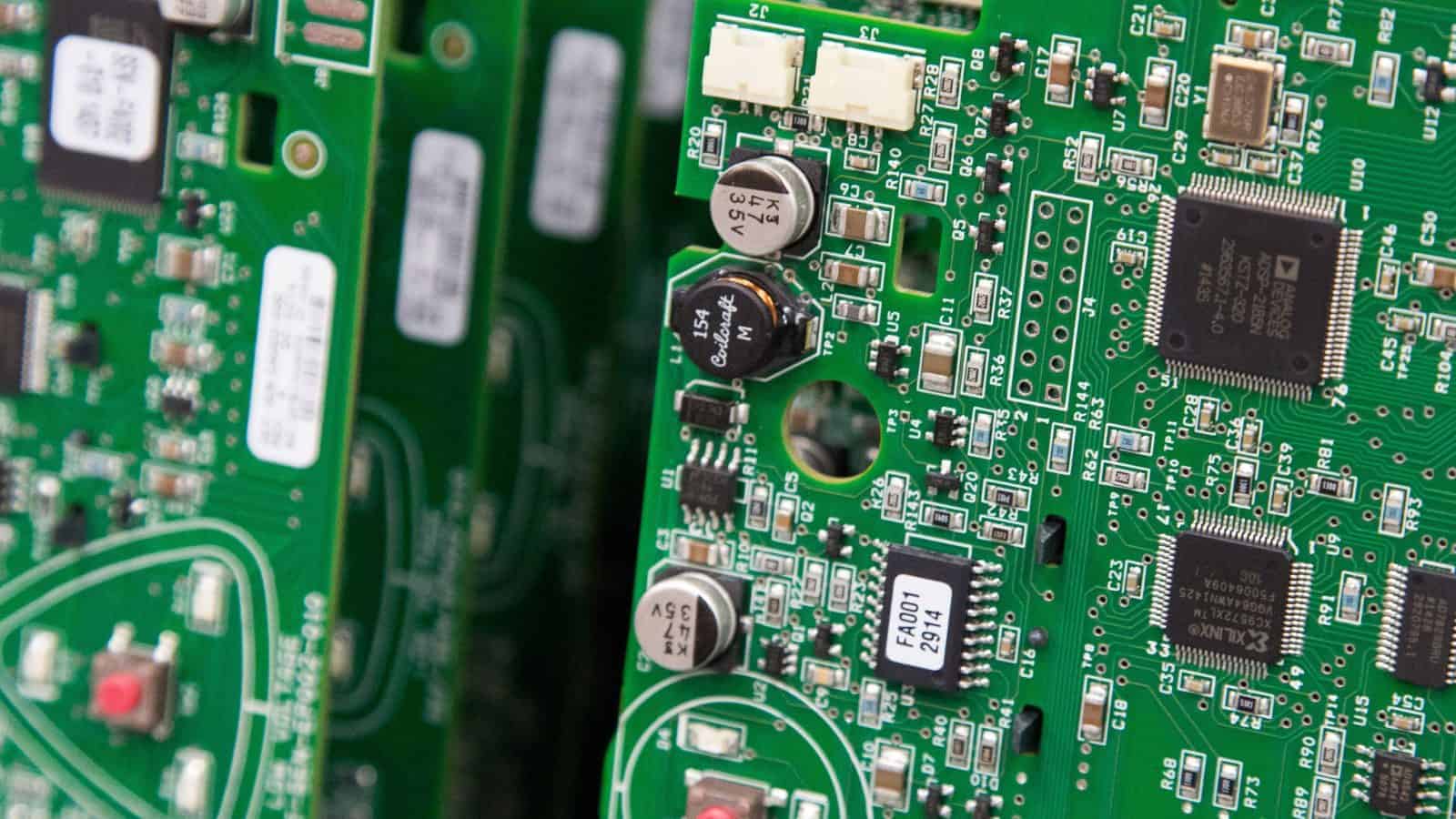Manufacturers: Protecting American Innovation Critical to Fight Current and Future Health Crises
Washington, D.C. – Following today’s announcement by the World Trade Organization’s General Council that member states have agreed to delay a final decision on an expanded intellectual property waiver for COVID-19 products, National Association of Manufacturers President and CEO Jay Timmons released the following statement:
“The WTO’s decision to delay the expanded intellectual property waiver is a welcome step toward protecting American innovation and technology leadership. This is vital not only for future pandemic responses, but also for the sector’s ability to produce new and advanced treatments or fund critical research and development.
“Manufacturers in the U.S. are leading our post-pandemic recovery and investing heavily in the development of cures and therapeutics. An expanded WTO waiver would force manufacturers in America to give away rights unfairly to international competitors and economic rivals like China, disincentivize companies from continuing the cutting-edge research underway, put jobs at risk and harm the sector’s global competitiveness.
“Manufacturers will continue to work with partners around the world to tackle current and emerging health challenges, while protecting the IP rights of those many companies which have been so essential to an effective pandemic response.”
-NAM-
The National Association of Manufacturers is the largest manufacturing association in the United States, representing small and large manufacturers in every industrial sector and in all 50 states. Manufacturing employs more than 12.9 million men and women, contributes $2.77 trillion to the U.S. economy annually and accounts for 55% of private-sector research and development. The NAM is the powerful voice of the manufacturing community and the leading advocate for a policy agenda that helps manufacturers compete in the global economy and create jobs across the United States. For more information about the NAM or to follow us on Twitter and Facebook, please visit www.nam.org
How a Manufacturer Uses R&D to Keep Old Jets Flying
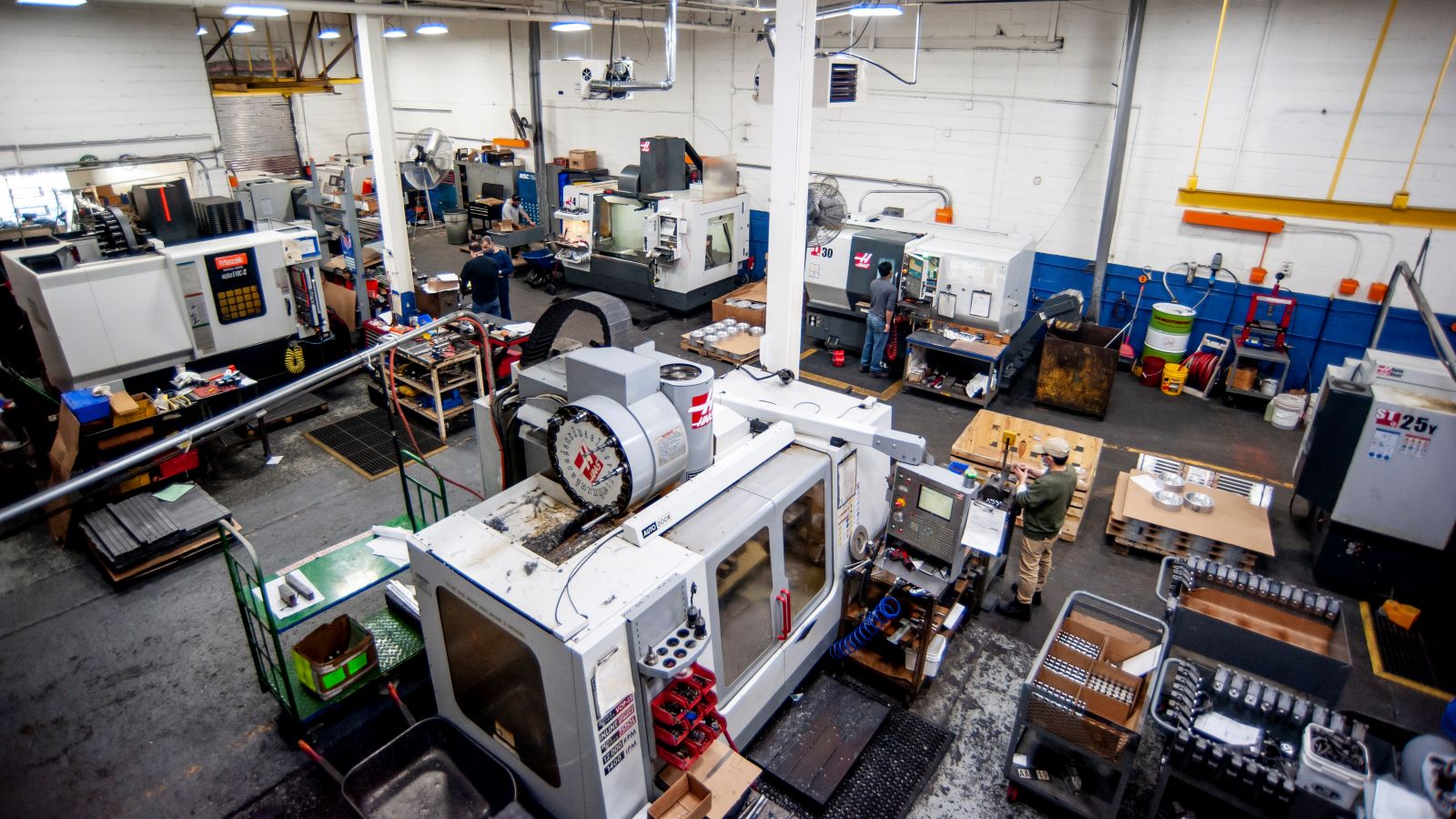
What does the U.S. military do when an expensive asset like a plane or a weapons system begins to break down?
Often, it turns to companies like Parts Life, Inc.—an innovative manufacturer that can reverse-engineer obsolete parts and help find solutions for hard-to-replicate products. But after a tax law change went into effect in 2022, the New Jersey–based manufacturer is facing increased costs for research and development, creating a barrier to the kind of innovation that is the focus of its business.
The change: Until the beginning of 2022, businesses could deduct 100% of their R&D expenses in the same year they incurred the expenses. Starting this year, however, a tax law change requires businesses to spread their deductions out over a period of five years, making it more expensive to invest in growth and innovation.
A focus on innovation: For Parts Life, coming up with new ideas is an essential, daily activity.
- “Parts Life is built around being a solutions provider,” said Parts Life President and CEO Sam Thevanayagam. “We are providing solutions for very expensive and mission-critical assets that are extremely strategic for the defense of the nation, but are also older—so their parts are not necessarily being supported.”
- “That’s where we come in to do reverse engineering. So, we’re looking at an old problem, but using innovation to solve it going forward.”
A benefit for savings: By helping the military extend the life of its assets, Parts Life also helps taxpayers.
- “We’re taking care of the warfighter and the taxpayer,” as Thevanayagam puts it.
A look ahead: As global conflicts shift, the U.S. military needs suppliers like Parts Life to help it develop solutions for future challenges, too.
- “Right now, our military is coming out of conflicts in Afghanistan and Iraq, but future conflicts may involve different terrain with different problem sets,” said Thevanayagam.
- “The work that we are doing today is helping them figure out how to approach those challenges. We’re having them tell us where they need to be, and then we’re helping them with the innovation they need to be successful.”
A tough choice: With the change in tax law, companies like Parts Life will be forced to make difficult decisions about how to spend scarcer resources, harming their ability to do critical, forward-looking work.
- “Currently, we’re leaning forward in resources and talent to lead the future,” said Thevanayagam. “If the government is going to pull the rug out from under us, we’re not going to be able to be aggressive. We’ll have to focus on maintaining our business rather than investing in new innovation.”
Our take: The NAM has pushed forcefully for the tax change to be reversed—and in October, told policymakers that the R&D amortization provision poses a “serious threat to our national security,” in part because of its impact on manufacturers like Parts Life that supply and support the U.S. military.
The bottom line: “The only way for us to continue to be relevant is to make sure that we’re investing in innovation and seeing what we can do to be a part of designing the future,” said Thevanayagam.
Visit the NAM’s R&D Action Center for critical R&D policy updates, industry stories and an opportunity to engage directly with your members of Congress.
New Data: Taxing R&D Will Cost U.S. More Than 260,000 Jobs Next Year If Congress Doesn’t Act
Manufacturers Would Lose 60,000 Jobs and $32 Billion
Washington, D.C. – The National Association of Manufacturers released new analysis revealing that if the tax code’s research and development amortization requirement, which went into effect this year, is not reversed immediately, the U.S. economy would lose 263,382 jobs and experience an $82.39 billion hit to GDP in 2023.
Because the law changes the way businesses have handled investments for decades, companies like NAM member Miltec UV, which develops new UV lamp systems for curing inks and coatings for everything from optical fiber to soup can lids, are having to grapple with a significant new cost that they had not anticipated previously. “Absent congressional action, we’re gonna get hit hard,” said Miltec UV President Bob Blandford. “Our taxes are going to go up dramatically. That’s cash getting sucked out of the business. So that’s going to get pretty ugly.”
The manufacturing industry, which conducts 55% of private-sector R&D, would directly lose 59,392 jobs and face a decline in output of $31.69 billion. Prior to 2022, companies could immediately deduct R&D expenses in the year in which they are incurred, which promotes long-term job-creating investments in the United States. However, requiring companies to spread out these deductions over a period of years penalizes innovation by making R&D more costly.
“A failure to act will burden manufacturers large and small who use this tool to create well-paying jobs and support families and communities,” said NAM Managing Vice President of Tax and Domestic Economic Policy Chris Netram. “We need Congress to act quickly to address this and other critical tax provisions in year-end legislation before we cede our competitive edge to foreign nations like China, which provides a super deduction in the amount of 200% of R&D expenses.”
-NAM-
The National Association of Manufacturers is the largest manufacturing association in the United States, representing small and large manufacturers in every industrial sector and in all 50 states. Manufacturing employs more than 12.9 million men and women, contributes $2.77 trillion to the U.S. economy annually and accounts for 55% of private-sector research and development. The NAM is the powerful voice of the manufacturing community and the leading advocate for a policy agenda that helps manufacturers compete in the global economy and create jobs across the United States. For more information about the NAM or to follow us on Twitter and Facebook, please visit www.nam.org.
Why Manufacturers Need R&D Tax Certainty
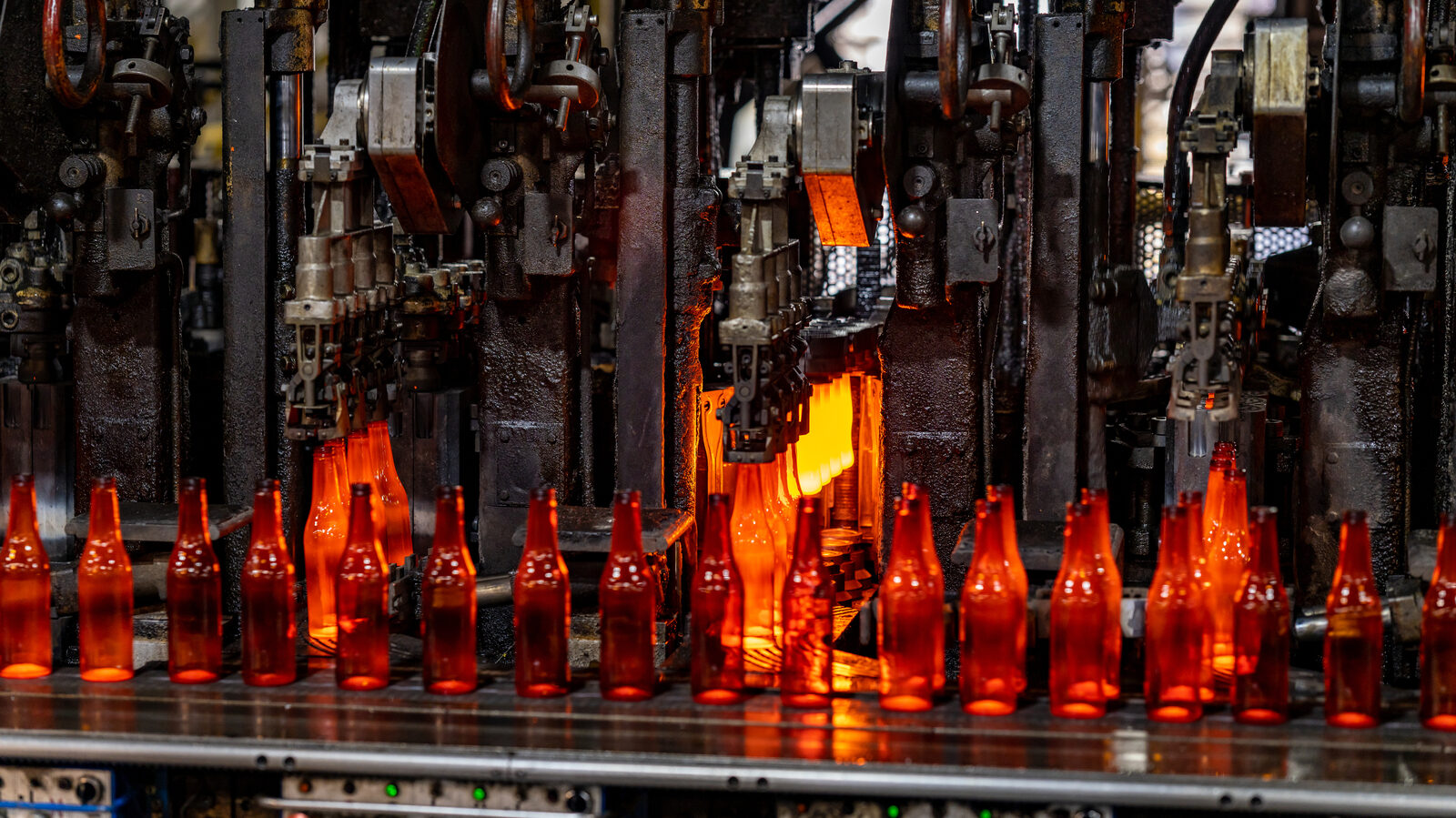
This story can also be found within the NAM’s R&D action center.
For companies like O-I Glass, Inc.—a glass manufacturing company headquartered in Perrysburg, Ohio—research and development just got a lot more expensive.
Until the beginning of 2022, businesses including manufacturers could deduct 100% of their R&D expenses in the same year they incurred the expenses—but a change in the tax law that took effect this year required businesses to spread deductions over a five-year timeframe. O-I Vice President of Global Tax and Business Services Scott Gedris explained how that impacts the company.
The scale: With 17 plants in 13 states around the country—and 70 plants in 19 countries around the world—O-I has a significant reach, serving both large multinational companies and smaller customers like microbrewers and small batch spirits manufacturers.
- The scale of the operation means that O-I invests significantly in R&D, working to develop innovative processes and specific product designs to meet individual customer needs.
- “If you look at our public financial statements, we spent $82 million in 2021 on R&D—primarily in the U.S.—and that is a significant investment for us,” said Gedris.
Case in point: In the past decade, O-I has invested heavily in developing more effective, efficient and sustainable processes. In 2011, it built a 24,000-square-foot R&D facility on its Perrysburg, Ohio, campus and has announced plans for a new glass manufacturing facility in Bowling Green, Kentucky, using technology developed at the Ohio facility.
- Because the company spends so much of its resources on R&D, a significant increase in the cost of investment would require it to make difficult decisions.
- “Anything that comes out of this in terms of tax dollars … creates a choice within our organization about where we allocate our capital,” said Gedris.
Environmental effects: At a time when O-I is making important investments in sustainability, a significant reduction in available resources could present obstacles to the company’s environmental goals.
- “When we rebuild a glass manufacturing furnace, that is a multimillion-dollar investment. The cost continues to increase with inflation and investment in modern technology that we need in order to meet our corporate sustainability goals,” said Gedris.
- “With the cost of that equipment increasing, if we’ve got $10 million less because of increased taxes, we need to evaluate whether we are going to rebuild a glass furnace in one of our 17 U.S. plants, or are we going to defer that? Alternatively, those dollars could come out of our R&D spend, which will impact what we are able to invest in future technology improvements.”
Human impact: Investments in innovation and R&D don’t just create better products and processes for consumers; they also support local economies across the country.
- “When we invest in a glass manufacturing furnace in these towns, it’s an investment in the community,” said Gedris. “We’ve got multigenerational glass manufacturers in those facilities. It’s a project that people depend on, and they have a lot of pride in the product and the processes at their facility.”
The last word: “When you’re investing in R&D, you’re investing long term—and that means you need certainty in the tax policy,” said Gedris.
Visit the NAM’s R&D Action Center for critical R&D policy updates, industry stories and an opportunity to engage directly with your members of Congress.
Corning Confronts R&D Hurdles

This story can also be found within the NAM’s R&D action center.
Corning Incorporated has been turning out innovations for well over a century and a half—since 1851, to be exact. But a recent change in tax policy that makes R&D more expensive could have a significant impact on the company’s ability to build on its impressive history.
- “We have a wonderful track record for innovation,” said Tymon Daniels, vice president of tax at Corning, a material sciences manufacturing company with a focus on glass.
- “In 1897, when Thomas Edison was working on electric lights, he came to us to make the glass bulbs. 110 years later, when Steve Jobs was working on the iPhone, he came to us to make the glass used for the screen. More recently, we figured out a way to make special glass vials that sped up production of the COVID vaccine. … We’ve been able to do this because of R&D.”
The issue: Until the beginning of 2022, businesses could deduct 100% of their R&D expenses in the same year they incurred the expenses. Starting this year, however, a tax law change requires businesses to amortize or spread their R&D expenses out over a period of five years, making it more expensive to invest in growth and innovation.
The impact: According to Daniels, the abrupt change in a policy that has existed for decades poses a serious challenge for the company.
- “The R&D deduction has been in existence for over 70 years—a very good tax policy. Requiring the amortization of R&D expenses is a dramatic shift to a very bad tax policy,” said Daniels. “It causes a significant spike in cash taxes.”
The trade-offs: At a time when company leaders are trying to make decisions about how to invest finite resources, a significant increase in the tax burden can hinder future growth plans, Daniels emphasized.
- “Our C-suite is trying to make decisions about big issues like capital expenditures and jobs,” said Daniels. “This makes those decisions harder and comes at a time when the economic outlook is highly uncertain.”
The action: Corning is asking Congress to find a solution, and quickly.
- “We need lawmakers to extend the full deductibility of R&D expenses,” said Daniels. “If Congress can’t make a permanent fix, then at least making full deductibility retroactive to 2022 and extending it through 2025 would still be good. Otherwise, the impact to Corning may be extra cash taxes of roughly $150 million in 2022 alone.”
The last word: “Requiring the amortization of R&D is all I’m thinking about right now,” said Daniels.
Future Skills Needs Study: Quick Facts
The Center for Manufacturing Research at the MI recently released a study in partnership with Rockwell Automation and PTC forecasting the skills needs of the manufacturing sector over the next 5 to 10 years.
Here’s what the study found:
- There are 3 major skills needs for the future: data analytics, an agile mindset paired with problem-solving and critical thinking, and interpersonal skills.
- Manufacturers are interested in preparing for upcoming skills needs by connecting with the workforce of the future. (See how the MI is building this workforce with our groundbreaking initiative, Creators Wanted.)
- Manufacturers are intentionally recruiting and promoting segments of the population that have historically been excluded from manufacturing roles or leadership. (Learn how the MI is leading conversations about D&I here.)
- Focusing on corporate culture is a key component of building and maintaining a strong workforce.
- Nearly every company surveyed reported the importance of continuous training for their current worker, i.e. “upskilling”.
Read the full report here.
“Cybersecurity Finds You”: An Interview with Rockwell Automation’s CISO
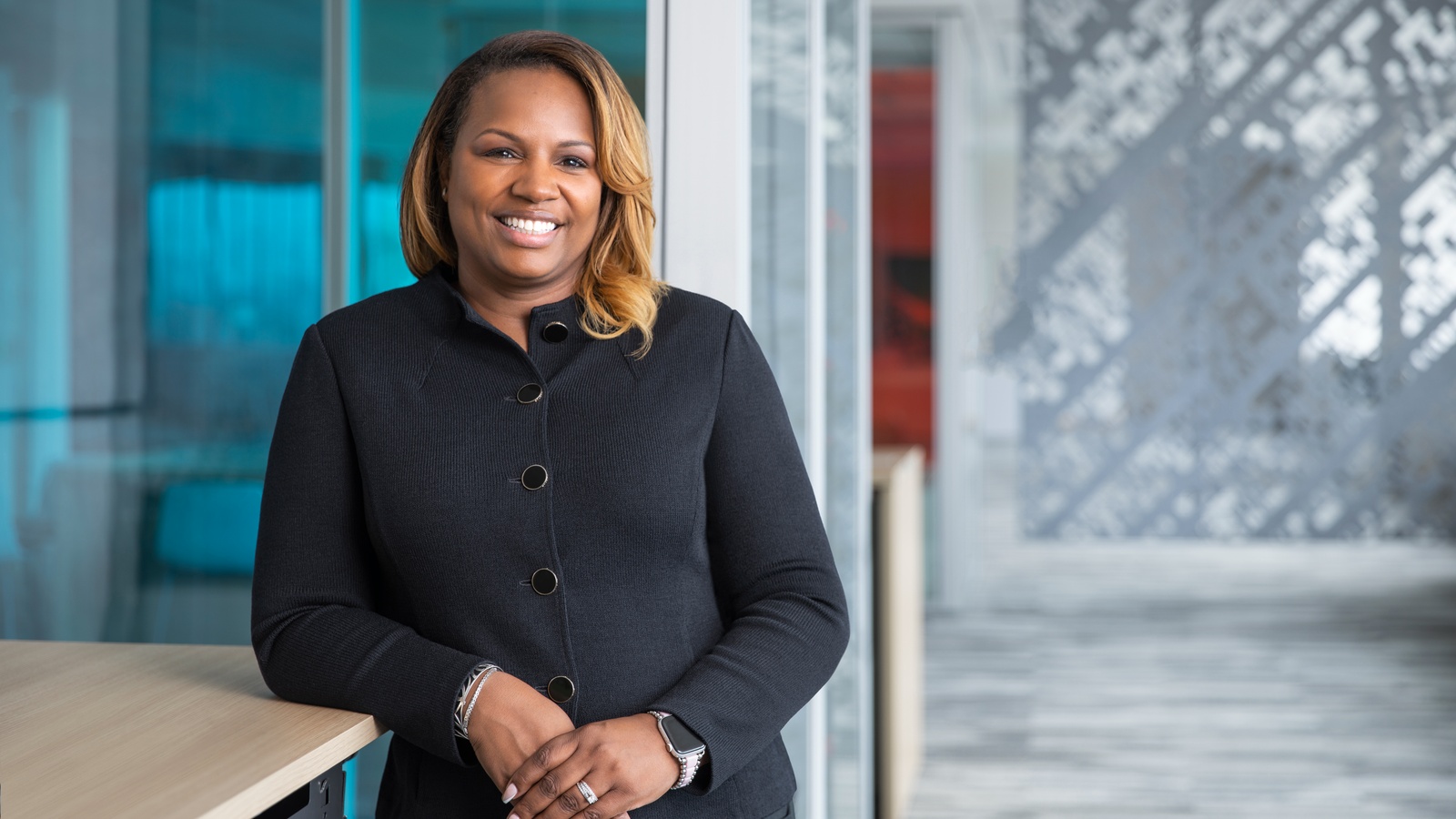
When asked how she got into cybersecurity, Nicole Darden Ford replies “cybersecurity kind of finds you.” The new chief information security officer at Rockwell Automation began her career in the military, where she first got into cybersecurity, then created a cybersecurity program for the U.S. Department of Agriculture before taking several leadership roles in the private sector.
Today, her advice for companies is surprisingly similar: cyberattacks will find you. As she puts it, “It’s not if, it’s when. And it’s not one time, it’s several.”
So how should manufacturers prepare for these threats? We spoke to Darden Ford recently about her recommendations, as well as Rockwell’s efforts to safeguard its own supply chain and provide services to other companies.
The current situation: “Manufacturers account for 65% of industrial ransomware last year. We’ve seen an unprecedented number of attacks, and we’ve seen attackers focus on OT,” Darden Ford says. She predicts the attacks on OT will only escalate.
- Meanwhile, many manufacturers have a clear strategy for IT, but they have not given as much thought to protecting their operational technology. Yet, as machines get more connected, their operations may become more vulnerable—especially as companies try to integrate legacy systems that weren’t “meant to be connected or patched.”
- In addition, “because we are so connected, there are third-party risks,” Darden Ford says. Small manufacturers may be more inviting targets for hackers than they realize, since their systems could provide a back door into the networks of their larger clients.
- On the plus side, manufacturers are getting smarter in building their defenses, she says. And that’s where Rockwell comes in.
Rockwell’s role: Rockwell aspires to become a “trusted advisor” to companies seeking cyber defenses, says Darden Ford. It already manufactured OT, so moving into cybersecurity for such equipment was a natural next step.
- Its partnerships with other firms, including Dragos, CrowdStrike, Cisco and others, allows
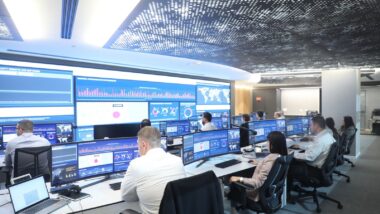 Rockwell to offer bespoke cyber monitoring and other services to its clients.
Rockwell to offer bespoke cyber monitoring and other services to its clients. - These services include penetration testing, threat detection and response and an OT “SOC”—i.e., a security operations center, which monitors threats to clients’ operations remotely.
How it works: “We have an OT cybersecurity roadmap—it starts with an assessment in your specific OT space, then walks through potential risks,” Darden Ford says. (See the end of this article for her detailed description of this roadmap.)
- The process includes building an “asset inventory, as you can’t protect what you don’t know.”
- “Then we talk about ways you can reduce your attack surface,” Darden Ford continues. “This is about segmentation. We help organizations divide their network into different domains. If you have ransomware or malware that propagates very quickly, then you have the opportunity to quarantine it.”
- In addition, the roadmap helps companies decide which tools and resources to use. For OT, you need to use very passive systems that don’t interfere with “getting the product out the door,” Darden Ford says.
After this process is complete, Rockwell’s SOC helps clients stay safe and hone their responses to real attacks.
- The SOC keeps eyes on a company’s operations remotely, notifies it of breaches within the plant network and helps it decide which threats to tackle. As Darden Ford says, the SOC stands in for the teams that companies would otherwise have to hire themselves.
On-site resources: Manufacturers can tap their existing staff to work on cyber defenses, including with offsite monitors. Darden Ford recommends drafting “the plant engineering team, along with the IT team,” who would have the knowledge and resources required.
A community effort: Large manufacturers should help educate small manufacturers on cyber issues, says Darden Ford.
- “We have a lot of suppliers, so to mitigate third-party risk, we provide more awareness about OT and advice about upping their cyber hygiene. We work closely with suppliers and do a lot of knowledge sharing,” she says.
Collaboration at the top: In addition, it’s also beneficial for CISOs and manufacturing leaders to consult their peers in what Darden Ford calls “mastermind sessions.”
- These conversations have provided her with “a lot of insights and data,” she says. She gets indispensable input on “strategies, frameworks, journeys and roadmaps,” as companies try to find their way through this cyber landscape together.
The bottom line: When asked what she says to companies that doubt the need for cyber protections, Darden Ford has a simple answer: “You wouldn’t drive your car without insurance—that’s what this is.”
- “What used to be optional is becoming mandatory,” she adds. “For small or midsize companies, you are still going to have to report” back to your large customers, many of whom require stringent protections of their suppliers. Those requirements will only get “more and more rigorous over time,” she warns.
- In other words, however you choose to do it, “you need a plan.”
The Roadmap
Darden Ford supplied us with her account of Rockwell’s cyber roadmap for its own suppliers, below. “The playbook aligns with the NIST framework, showing you step-by-step how to audit your current security state, identify gaps and take a proactive approach to mitigate risk,” she says. Here is her account of the key steps.
Step #1: Discover
- Know where you stand. Conduct a security and risk assessment—log all issues and review progress against findings.
- You can’t protect what you can’t see. You must gain a full understanding of what network assets you have on your plant floor and their current state. Start by conducting extensive network discovery and asset inventory.
Step #2: Remediate
- Work with stakeholders to prioritize assets and organizational risk levels. Take the necessary steps to eliminate, upgrade or replace unneeded, unused or unsupported OT applications and infrastructure. This will look different for every organization based on what you discover in Step #1.
Step #3: Isolate
- Establish a perimeter by physically and logically segmenting your networks. Put up a firewall and establish internal and external cybersecurity policies to protect your OT assets. Set up an on-premises industrial data center to encapsulate critical applications inside the protected OT network.
- Secure endpoints with security software on plant floor assets.
- Enable third-party remote access. Third parties need access, but you must control the access and maintain visibility into what they’re doing in your network by enabling OT access controls.
Step #4: Monitor and Respond
- Now that you have a solid foundation in place, the next step is to implement OT network monitoring to provide real-time OT cybersecurity, including malicious event/asset risk alerting, network diagnostics, AI learning and KPI dashboarding. The data only works for you if you are continuously viewing and reacting to it.
- Establish an OT SOC for 24/7 real-time alert monitoring, acknowledgement and triage. Cyberattacks aren’t limited to 9–5.
- Create an integrated IT/OT cyber event response team. Define event response and isolation protocols. IT/OT must have equal involvement and buy-in for these protocols to be successful. Execute tabletop exercises to simulate attacks and outcomes.
How Managers Can Produce Top-Notch R&D
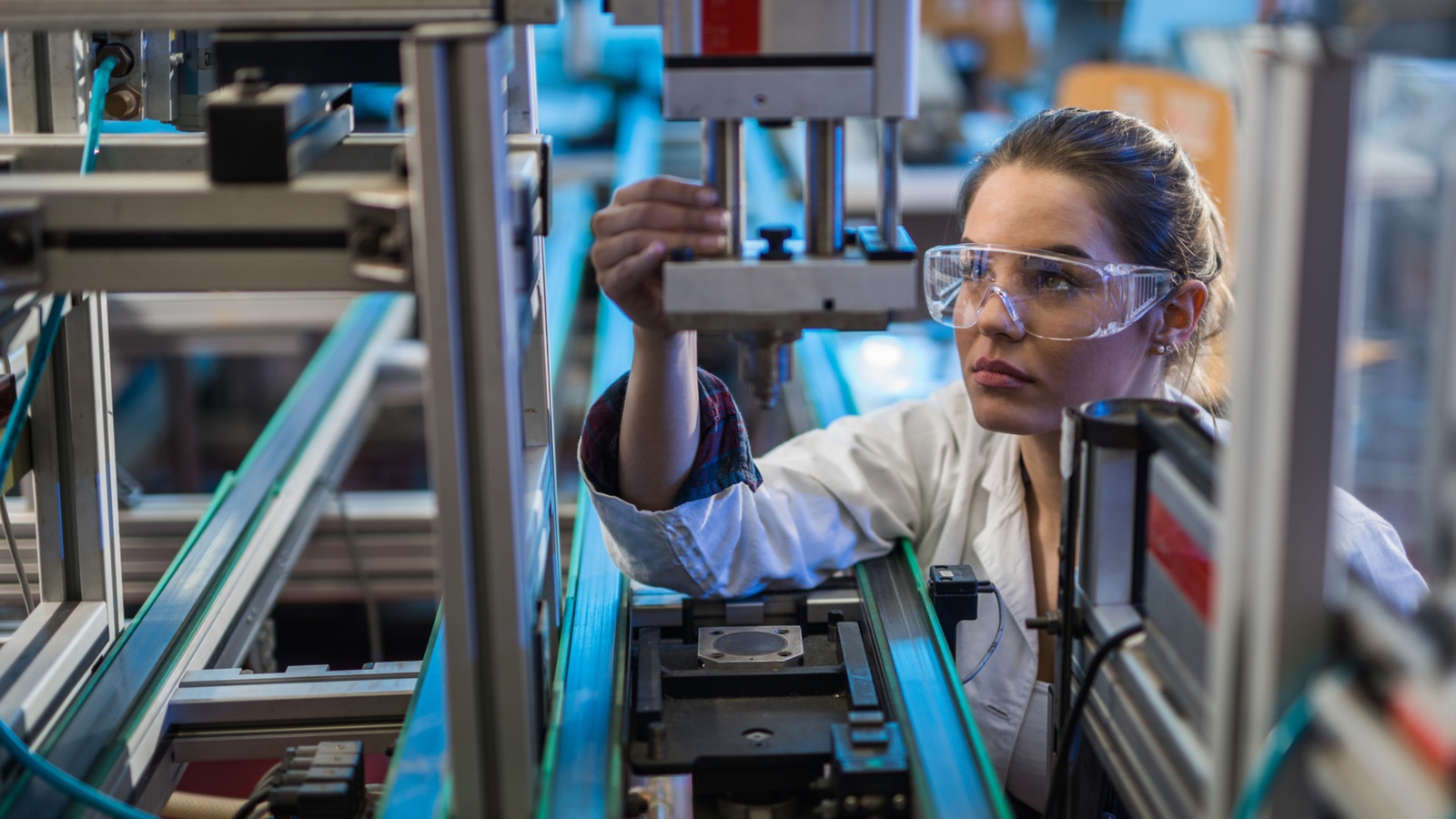
As innovation in manufacturing continues at breakneck speed, research and development is more important than ever—but it requires outstanding managers to make it all happen.
So how do these managers get the education and insights they need? The Innovation Research Interchange, a network of cross-industry innovators that the NAM combined with earlier this year, has an answer: an executive management course called Shaping Innovation Leaders.
The gist: Co-hosted by the Kellogg School of Management at Northwestern University, the course provides a forum for strategic thinking, education and networking for technology leaders from around the world.
- In 2023, it will take place on May 13–19 on the Northwestern campus in Evanston, Illinois.
The details: The goal of this seven-day program is to develop midlevel managers into leaders for their companies, by covering topics including:
- Evaluating financial results;
- Segmentation, targeting and positioning;
- Growing and defending your brand;
- Legal and strategic investments;
- Building a better network; and
- Negotiating skills and strategic alliances;
Who’s involved: To get a sense of this event’s caliber, look no further than the attendees from the 2022 course.
- They hailed from a wide range of companies, including manufacturers such as Mars, Procter & Gamble, John Deere, Hershey, NatureWorks, Air Liquide, Kimberly-Clark Corporation, Sherwin-Williams and many, many more.
The reviews are in: Participants in the 2022 course were enthusiastic about what they learned and experienced.
- “[I’m] really super impressed with the program, soup to nuts,” said John Deere Manager for Global Strategic Communications & Culture Jacqueline Kiple. “One of my favorite aspects of the program was really getting a chance to think about our business a little bit differently … to take a step back and think about the higher-level impacts that affect decision-making in our respective organizations.”
- “What I really enjoyed about this course was first and foremost the esteemed professors. … [The course] gives you a really big view of all the information you need to really understand business and understand the decisions that are getting made,” said Sherwin-Williams Associate R&D Director Tony Rook. “It gives you that top-level view of how you add value to [your] organization.”
Get involved: Registration is now open for the 2023 course. You can find additional information and register here.
Vermeer Corporation Speaks Out on R&D Tax Policy
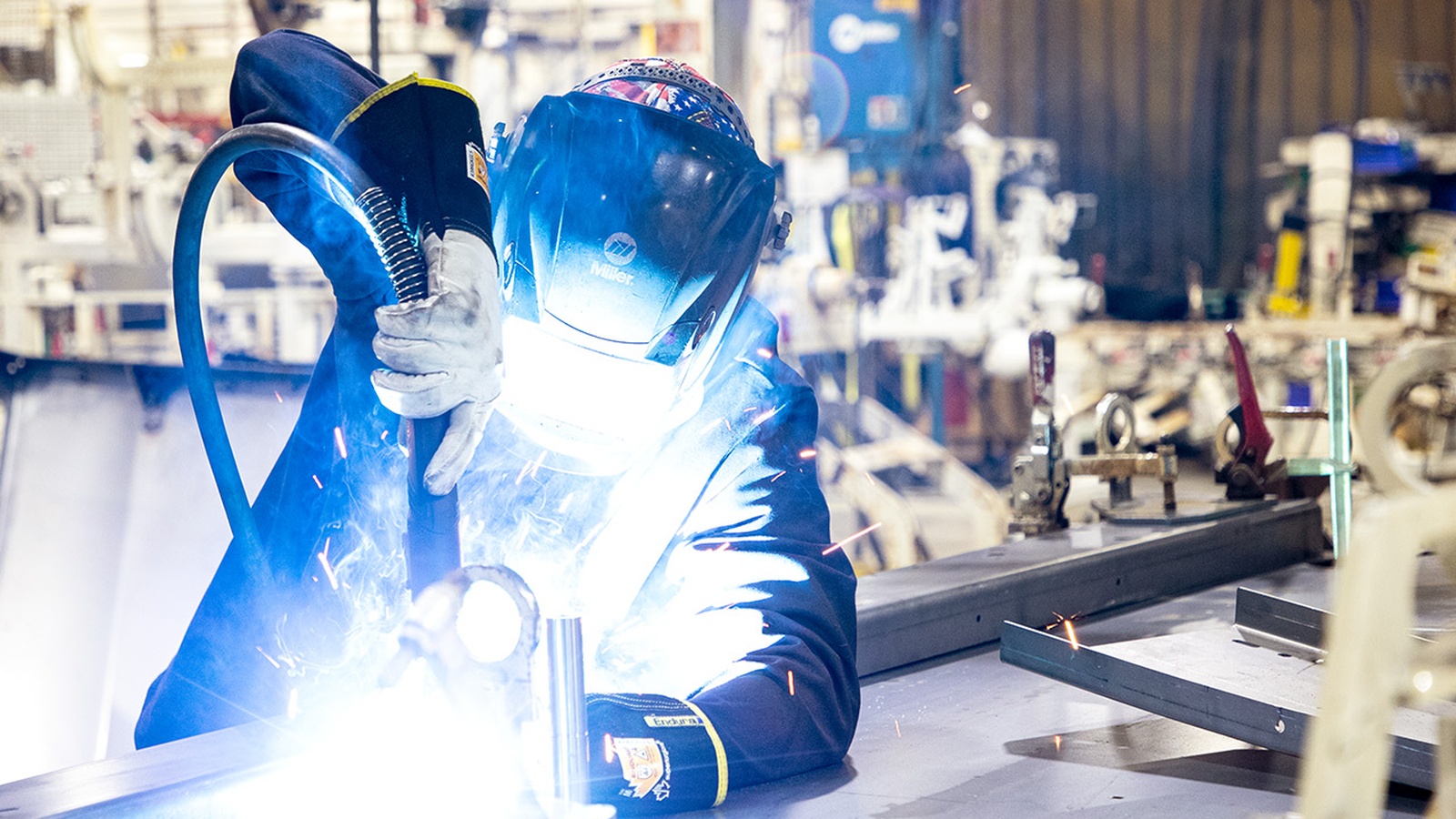
This story can also be found within the NAM’s R&D action center.
After a tax law change went into effect in 2022, manufacturers across the country found themselves facing new obstacles to investment in research and development. For Vermeer Corporation—a manufacturer of industrial and agricultural equipment based in Pella, Iowa—the change is causing real concern.
The background: Until the beginning of this year, businesses could deduct 100% of their R&D expenses in the same year they incurred the expenses. Starting in 2022, however, a change in the tax law required businesses to spread deductions over a five-year timeframe. That change is making investment more expensive and preventing some companies from putting their resources into critical innovation.
Constant innovation: As a company that makes a variety of diverse products for fields like agriculture, mining, utility construction, forestry and renewable energy, Vermeer is always working at the cutting-edge of new technology, and that requires significant investment in R&D.
- “Vermeer designs and builds specialized equipment—and it has to be innovative,” said Vermeer Corp. Senior Director of International Business Development and Government Affairs Daryl Bouwkamp. “We have to push that leading edge constantly. The history of Vermeer is a history of invention and innovation.”
Vital competition: According to Vermeer, R&D is also vital to the ability of manufacturers in the United States to compete with foreign companies.
- “We’re not the only company that’s innovating around the world,” said Vermeer Vice President of Finance Ryan Agre. “There’s pressure from companies in countries that are producing products like ours.”
Immediate impact: The new tax law has already had a serious effect, according to Agre.
- “It’s a material, meaningful impact,” said Agre. “It’s millions in additional tax that we will incur at Vermeer just next year—and that’s the one-year impact, so it’ll be even more significant over a five-year implementation period. We’re actively having to harvest cash elsewhere to offset this impending change.”
Pushing back on China: The U.S. tax law change also stands in stark contrast with policies from countries like China, according to Vermeer.
- “When you look at the generosity of foreign support, especially China’s, versus the United States, it’s so lopsided,” said Bouwkamp. “China is trying to drive behavior toward R&D—and that’s something we’re lacking.”
The big picture: Agre also noted that making R&D more expensive can make companies like Vermeer risk-averse—more likely to direct the investments they do make toward smaller or more incremental innovations, and less willing or able to invest in the kind of ambitious research that can offer truly transformative results.
- “We don’t know what we haven’t discovered yet,” said Agre. “We have a history of being innovative in new spaces, and that requires individuals to have funding and freedom of thought to go out and experiment. When you’re trying to create something that doesn’t exist today, you’re going to hit some home runs—but you’re also going to strike out a bit. When you need more certainty, you start cutting out uncertainty and making fewer investments in big ideas. That impacts not just Vermeer but the whole economy.”
Why Policymakers Should Support—Not Hinder—R&D
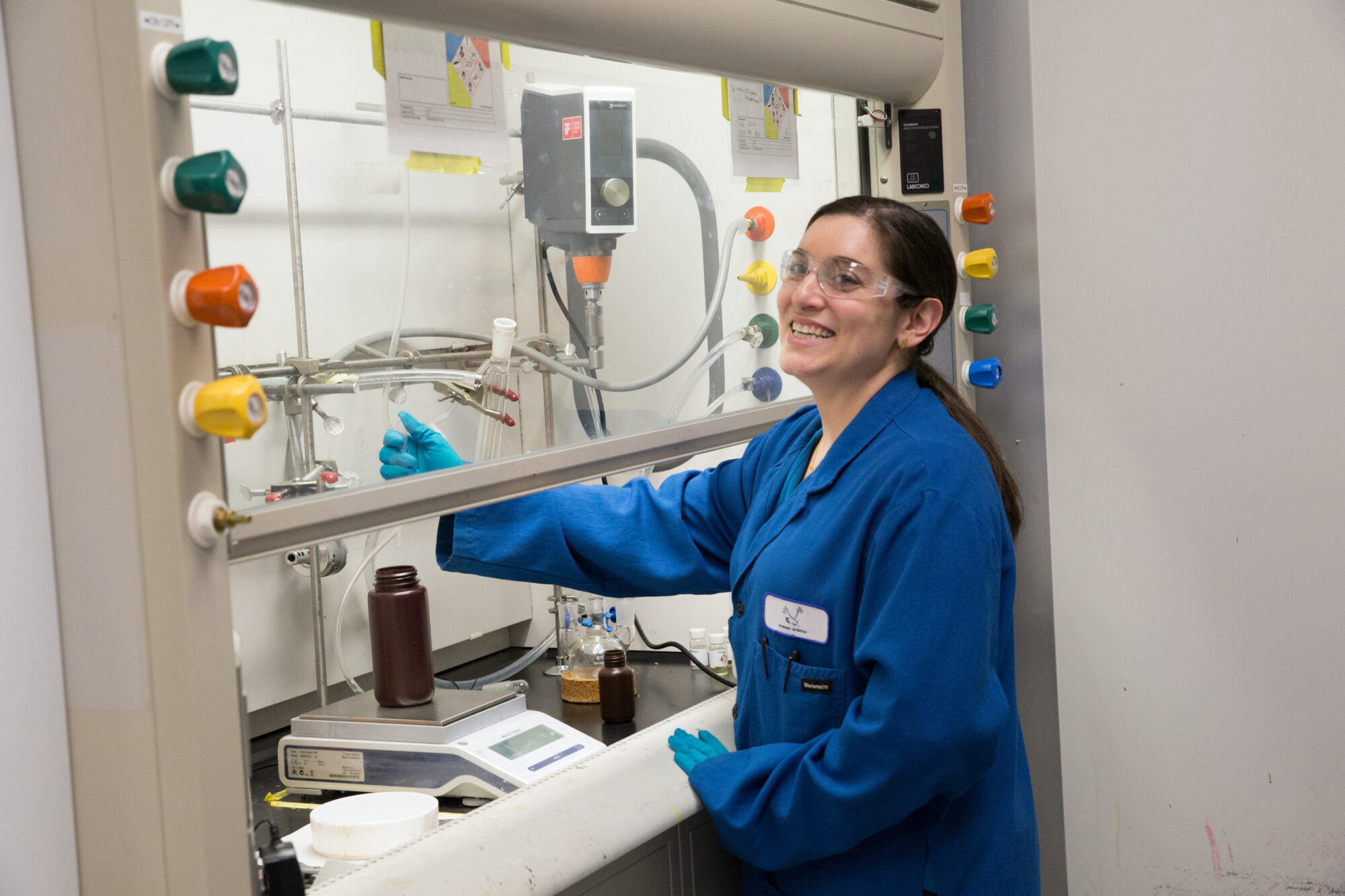
This story can also be found within the NAM’s R&D action center.
Manufacturing is an industry built on innovation—but with a recent change in tax law, manufacturers are encountering a new and major obstacle to the critical research and development investments they need to make in order to compete at home and around the world.
The background: Up until January 2022, a business could deduct 100% of their R&D expenses in the same year those expenses were incurred. But a change to the law that took effect this year now requires businesses to spread those deductions over a period of years, making investment in innovation more expensive.
The manufacturer: At Brewer Science—a Missouri-based manufacturer in the semiconductor industry—this issue has become an urgent challenge. The company is a top producer of materials needed to make semiconductor chips.
- In such a fast-moving industry, staying competitive requires nonstop innovation—and that demands constant investment in new products and processes. According to Brewer Science Executive Vice President Dan Brewer, a significant percentage of the company’s revenue goes back into R&D every year.
- “Semiconductors are everywhere, and new generations are constantly being created,” said Mr. Brewer. “The only way to compete abroad in our industry is to out-invent the competition.”
The impact: By making R&D investments more expensive, the tax code hinders manufacturers’ ability to make necessary expenditures not only on innovation, but also on other kinds of growth. Already, the harmful tax change has impacted Brewer Science’s bottom line and put a hitch in its plans for the future.
- Because the new law requires a deduction to be spread out over five years, companies are paying more in taxes than they were a year ago—a result that is causing them to reassess future investments.
- “We have a long list of new hires that we’re trying to bring on board and new projects we’d like to begin, and now we’re looking to make adjustments,” said Mr. Brewer. “Which projects can we put on hold? Which hires can we delay? It’s unfortunate that the same people who want investment in onshoring our industry are penalizing those that are already here.”
The ask: Brewer Science’s request is simple: return the tax treatment of R&D expenses to the way it was so that manufacturers are not penalized for pursuing the R&D that is necessary to spur economic growth and maintain America’s global leadership in innovation. There is still time to undo this for the current 2022 tax year, but time is quickly running out.
- “We’re not asking for a handout,” said Mr. Brewer. “We’re just asking Congress to allow us to immediately deduct these expenses as has been the case for nearly 70 years, since before Brewer Science was even a company.”
The big picture: Mr. Brewer is also quick to point out the widespread impact of this change, especially for smaller companies.
- “There are some companies that can’t make it five years without the ability to immediately deduct their R&D expenses,” he said.
Our move: The NAM has been leading the charge to ensure the tax code continues to support innovation by allowing businesses to fully deduct their R&D expenses in the year in which they are incurred.
The last word: “Our industry moves extremely fast,” said Mr. Brewer. “We must invest aggressively in research and development to stay relevant and stay competitive.”
